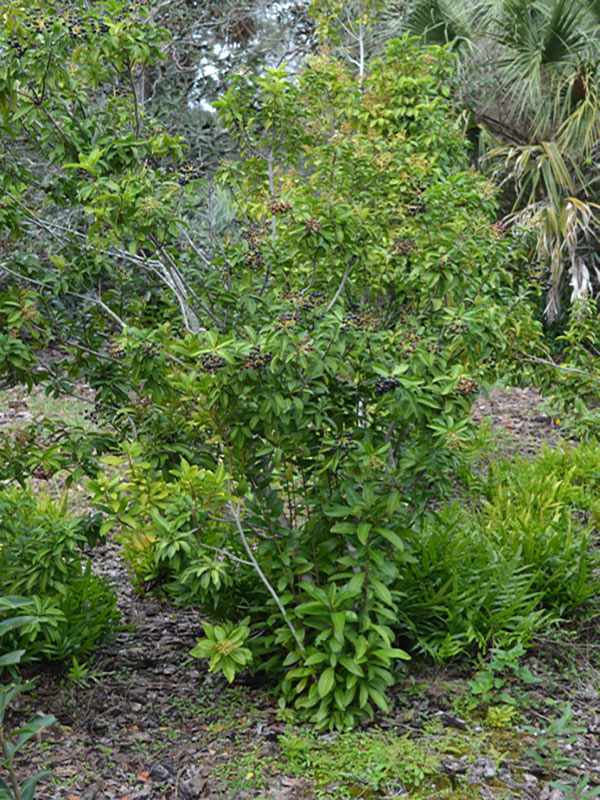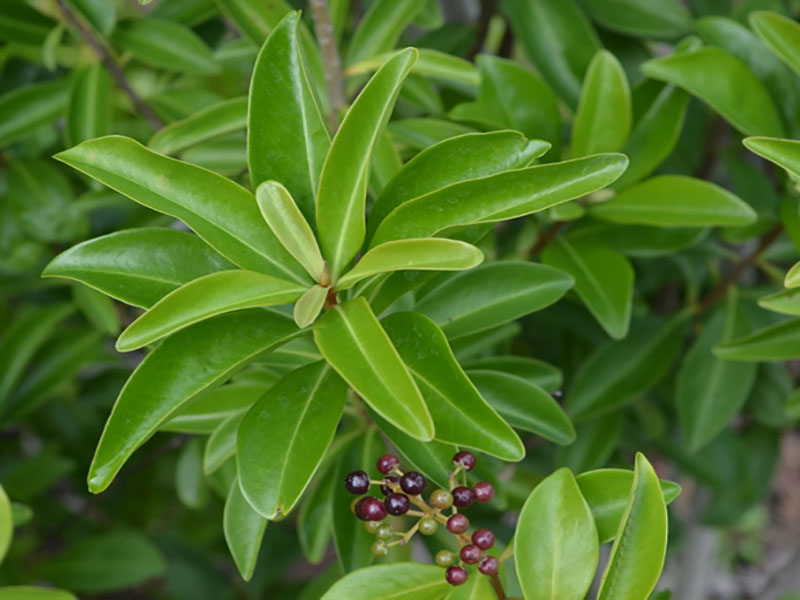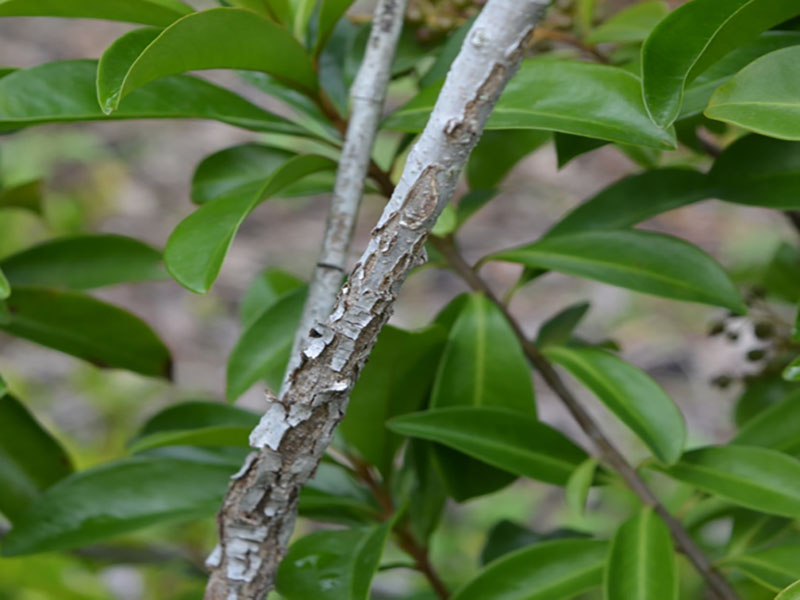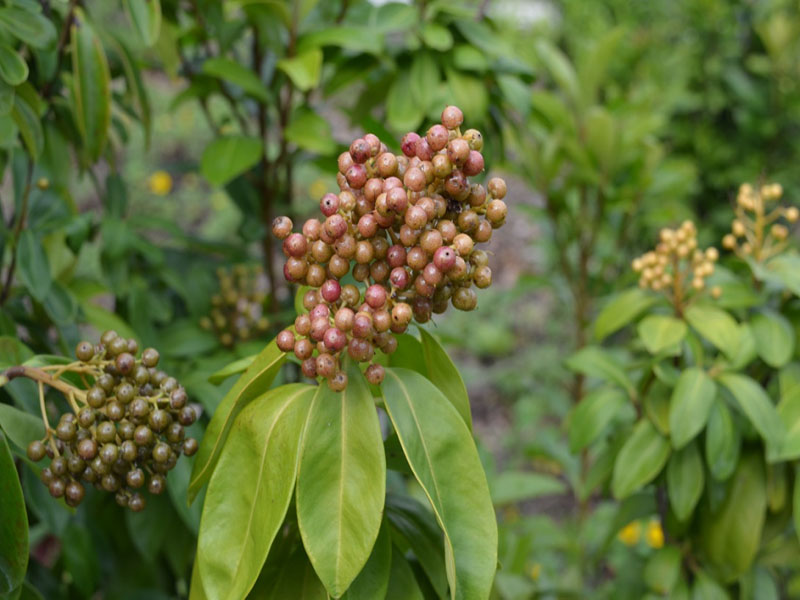Ardisia escallonioides (Marlberry, Marbleberry)
Botanical Information
| Family | Myrsinaceae |
| Genus | Ardisia |
| Species | escallonioides |
| Category | Tropicals |
| Type | Shrub (evergreen) |
| References | Gilman, E. F., Klein, R. W., & Hansen, G. (2018, December 07). Ardisia escallonioides Marlberry. Retrieved May 10, 2019, from https://edis.ifas.ufl.edu/fp048 |
| Origin | Florida to Mesoamerica. |
| Ethnobotanical Uses Disclaimer | Edible fruit. |
Details
| USDA Hardiness Zone | 8-10 |
| USDA Hardiness Ref. | |
| Canadian Hardiness Zone | 9 |
| Canada Hardiness Ref. | |
| RHS Hardiness Zone | H4 - H5 |
| RHS Hardiness Ref. | |
| Height | 4 - 6 m |
| Spread | 2 - 4 m |
| Flowering Period | January, February |
Description and Growing Information
| General Description | Marlberry is great in mixed group and background plantings. It can be trained into a small tree by removing lower foliage and branches to expose the interesting trunk pattern. |
| Landscape | Plant as a hedge or as a screen, or in the border. It attracts butterflies to the garden and is considered a pollinator plant. |
| Propagation | By seed. |
| Notable Specimens | Bok Tower Gardens, Lake Wales, Florida, United States of America. |
| Leaf Description | Oval shaped, 10 cm green leaves. |
| Flower Description | White flowered. |
| Fruit Description | Red, round fruit, less than 1 cm in length, which birds like to consume. |



